This article has no lead section .(August 2021) |
This article has no lead section .(August 2021) |
There are two forms of institution-based training for general dentistry available for dental school graduates in Australia:
There are three forms of institution-based training for general dentistry available for dental school graduates in Canada:
There are two forms of institution-based training for general dentistry available for dental school graduates in the United States:
In the UK, most postgraduate training in dentistry are specialized. Some universities offer postgraduate degrees in general dentistry, with an emphasis on clinical research. [1]
All of the programs below can be 1-year programs with an option available to continue for a second year, or they may be a two-year program from the start. They allow the new dentist to further hone his or her skills in most of the traditionally defined disciplines of dentistry while at the same time increasing one's speed and refining one's techniques. These programs also afford trainees the opportunity to learn from the attending dentists who serve a supervisory role, something generally unavailable in private practice.
While a GPR is a hospital-based program, an AEGD is usually not and the differences between the two types of programs are generally a result of this distinction. [2] AEGDs are usually based in postgraduate dental school clinics. Both types of programs afford the trainee with a larger patient pool than he or she was exposed to in dental school as an undergraduate; while dental students will typically treat 2 or 3 patients a day in multiple-hour-long sessions, these postgraduate programs are constructed so that trainees may see anywhere from 8-15 patients a day, or even more. They emphasize restorative dentistry, fixed and removable prosthodontics, orofacial pain, and dental implants.
Both DO and GDR programs are 1-year long commitments and are usually based in a hospital setting. These programs provide a dentist with a wide range of experiences including oral surgery, oral pathology, oral medicine, and treating medically compromised patients.
Programs will often emphasize the importance of managing comprehensive dental treatment plans and adjusting them based on the patient's medical condition. During training, residents may be faced with the task of managing patients that require dentistry in a hospital setting due to a compromised medical condition. Medical management of dental patients may be emphasized in weekly grand rounds and rotations through anesthesia, internal medicine, and the hospital emergency department. Some programs also provide rotations in family medicine and otolaryngology. These rotations not only increase the trainee's knowledge and experience, but also allow physicians, resident or attending, to see how dentistry and medicine are related, permitting a better referral relationship in future practices. This relationship is best demonstrated in tumor boards where both medical and dental residents discuss and treatment plan head and neck cancer patients. GPR residents may also become familiar with performing dental/oral surgical procedures in the operating room and managing the patient's stay while in the hospital. Rotation through the dental specialties increases the resident's ability to handle situations in private practice without referral to a specialist.
These programs are usually 1-year in length and are designed very similar in structure to an AEGD program. Emphasis is placed on restorative dentistry, fixed prosthodontics, removable prosthodontics, orofacial pain, and dental implants.
Emphasis is on enhanced general practice skills to allow for broader patient care to underserviced areas. Clinical experience is usually obtained from the residency clinic in the department of dentistry, and during rotations including off site rural experience.
The goal of the program is to provide the recent dental graduate with a broad multidisciplinary approach to the clinical practice of dentistry. The postgraduate trainees are thus under the constant supervision and guidance of members of the attending staff. Experience is gained in general practice and specialties. The specialties represented are: Endodontics, Oral and Maxillofacial Surgery, Oral Medicine, Orthodontics, Periodontics, Prosthodontics and Pediatric Dentistry.
In general, GPR, DO/GDR, and MPT programs pay higher stipends than do AEGD, SEGD, and GradDipClinDent programs; this is because the former residents take call and answer consults. While on call, the residents are expected to manage dental as well as some head and neck trauma reporting to the ER in accordance with hospital guidelines
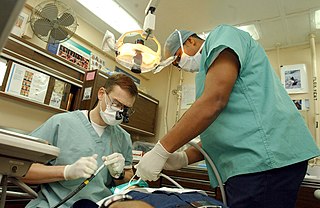
A dentist, also known as a dental surgeon, is a health care professional who specializes in dentistry, the branch of medicine focused on the teeth, gums, and mouth. The dentist's supporting team aids in providing oral health services. The dental team includes dental assistants, dental hygienists, dental technicians, and sometimes dental therapists.
Prosthodontics, also known as dental prosthetics or prosthetic dentistry, is the area of dentistry that focuses on dental prostheses. It is one of 12 dental specialties recognized by the American Dental Association (ADA), Royal College of Surgeons of England, Royal College of Surgeons of Edinburgh, Royal College of Surgeons of Ireland, Royal College of Surgeons of Glasgow, Royal College of Dentists of Canada, and Royal Australasian College of Dental Surgeons. The ADA defines it as "the dental specialty pertaining to the diagnosis, treatment planning, rehabilitation and maintenance of the oral function, comfort, appearance and health of patients with clinical conditions associated with missing or deficient teeth or oral and maxillofacial tissues using biocompatible substitutes."
A number of professional degrees in dentistry are offered by dental schools in various countries around the world.

The UCLA School of Dentistry is the dental school of the University of California, Los Angeles (UCLA) located in the Center for Health Sciences building in the Westwood neighborhood of Los Angeles, California, United States. The school has several educational and training programs, conducts oral and dental health research, and offers affordable dental care at three locations: Westwood, Venice, and Inglewood. The school also participates in several outreach endeavors, including numerous health fairs during the year, STEM pipeline programs and provides dental care for underserved populations in the region. The School of Dentistry is considered among the nation's best research-intensive dental schools.
The University of Pittsburgh School of Dental Medicine is the dental school of the University of Pittsburgh (Pitt). It is located in Pittsburgh, Pennsylvania, United States. It is one of Pitt's six schools of the health sciences and one of several dental schools in Pennsylvania. It is closely affiliated with the University of Pittsburgh Medical Center. The School of Dental Medicine accepted 3.6% of applicants for the class of 2016, a record low for the school's entire history.
An oral medicine or stomatology doctor/dentist has received additional specialized training and experience in the diagnosis and management of oral mucosal abnormalities including oral cancer, salivary gland disorders, temporomandibular disorders and facial pain, taste and smell disorders; and recognition of the oral manifestations of systemic and infectious diseases. It lies at the interface between medicine and dentistry. An oral medicine doctor is trained to diagnose and manage patients with disorders of the orofacial region.
There are two forms of institution-based training for general dentistry available for dental school graduates in the United States:
PGY, short for postgraduate year, is a North American numerical construct denoting the progress of postgraduate medical, dental, veterinary, podiatry or pharmacy residents in their residency programs. It is used to stratify responsibility in most training programs and to determine salary. The grade of a resident or fellow is denoted with an Arabic or Roman numeral after the PGY designation, such as PGY-3 for a third-year resident in any specialty.

Dentistry throughout the world is practiced differently, and training in dentistry varies as well.
East Carolina University School of Dental Medicine is the dental school at East Carolina University. It is North Carolina's second dental school, which enrolled its inaugural class in the fall of 2011. ECU SoDM was established to address the shortage of dentists in the rural regions across North Carolina. It serves North Carolina statewide by educating more dentists, with the primary focus of student recruitment being students who desire to return to rural and underserved areas to provide oral health care. The SoDM built 8 community service learning centers located in rural and underserved areas throughout the state. The students will complete nine-week rotations at the service learning centers during their final year of study.
The Rutgers School of Dental Medicine is the dental school of Rutgers University. It is one of several professional schools that form Rutgers Biomedical and Health Sciences, a division of the university. Established in 1956, the dental school is located in the University Heights neighborhood in city of Newark, New Jersey, United States. It is the only dental school in New Jersey and is one of only two public dental schools in the New York metropolitan area.
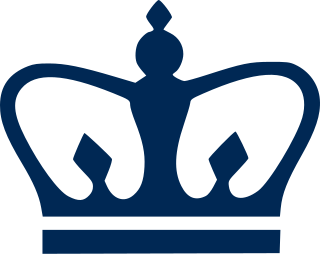
The Columbia University College of Dental Medicine, often abbreviated CDM, is one of the twenty graduate and professional schools of Columbia University. It is located at 630 West 168th Street in Manhattan, New York City. According to American Dental Education Association, CDM is one of the most selective dental schools in the United States based on average DAT score, GPA, and acceptance rate. In 2017, 1,657 people applied for 84 positions in its entering class. The median undergraduate GPA and average DAT score for successful applicants in 2020 were 3.62 and 22.8, respectively.
Special needs dentistry, also known as special care dentistry, is a dental specialty that deals with the oral health problems of geriatric patients, patients with intellectual disabilities, and patients with other medical, physical, or psychiatric issues.
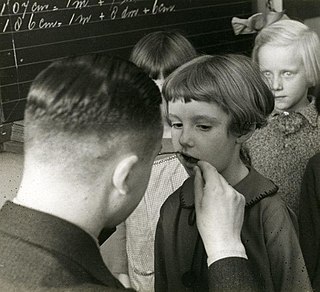
Pediatric dentistry is the branch of dentistry dealing with children from birth through adolescence. The specialty of pediatric dentistry is recognized by the American Dental Association, Royal College of Dentists of Canada, and Royal Australasian College of Dental Surgeons.
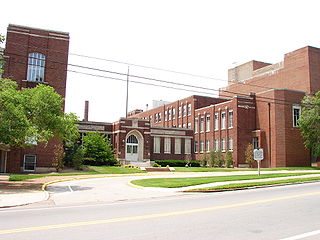
The School of Dentistry is a dental school within Meharry Medical College located in the United States city of Nashville, Tennessee.
The practice of dentistry in the United States is overseen by several agencies, including the American Dental Association, the Commission on Dental Accreditation, and the regional boards. Ultimate licensure is the responsibility of individual states. There are roughly 190,000 practicing dentists in the United States.
In the United States and Canada, there are twelve recognized dental specialties in which some dentists choose to train and practice, in addition to or instead of general dentistry. In the United Kingdom and Australia, there are thirteen.

Manipal College of Dental Sciences, Mangalore was founded in 1987 and recognised by the Dental Council of India in 1992 and by the Malaysian Dental Council in 2003. It was certified for ISO9001:2000 in 2006 and was re-certified for ISO9001:2008 in 2009. The college is a part of Manipal University. The college offers undergraduate (BDS) and postgraduate (MDS) programme.

The Dr. R. Ahmed Dental College and Hospital is a Government dental college located in Sealdah, Kolkata, in the state of West Bengal, India. It is affiliated to the West Bengal University of Health Sciences and is recognized by Dental Council of India. It teaches Bachelor of Dental Surgery (BDS) and Master of Dental Surgery (MDS) courses in various specialties.
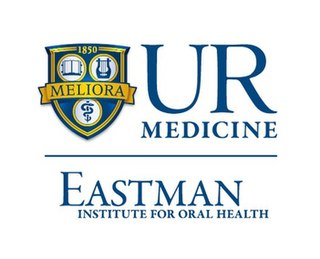
Eastman Institute for Oral Health of University of Rochester is a school of dentistry located at the University of Rochester Medical Center in Rochester, New York, United States. Unlike other dental schools in the United States, it does not have an undergraduate dental program. It is affiliated with Strong Memorial Hospital.